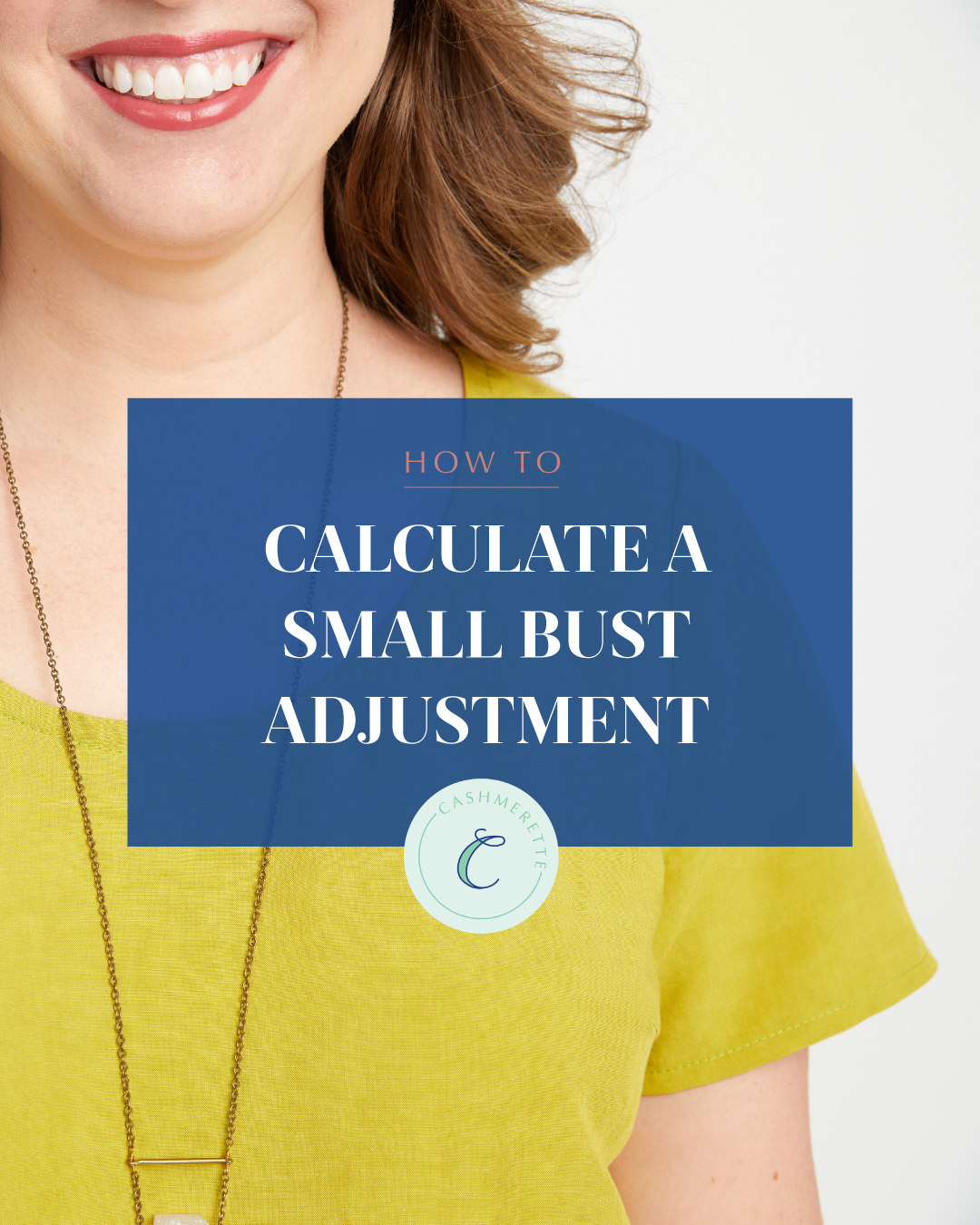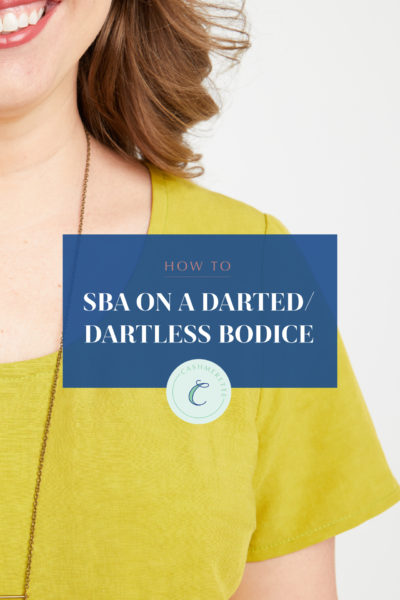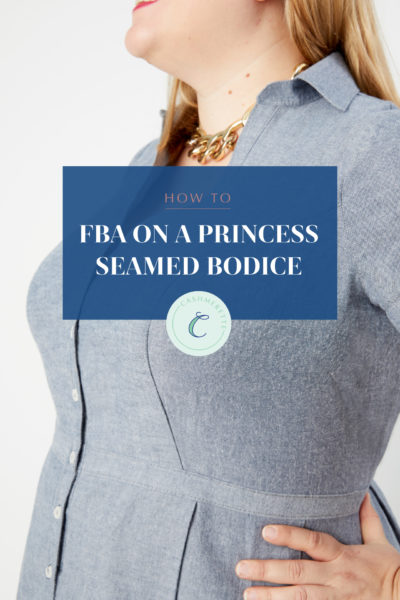If your bust cup size is smaller than the cup size of a pattern you’re using, you may need to do a small bust adjustment. Here’s how to calculate the size of your SBA.

Traditional sewing patterns are drafted for B cup, while Cashmerette patterns include three cup sizes for you to choose from: C/D, E/F, G/H. If your cup size is smaller than the cup size your pattern is drafted for, you may need to do a small bust adjustment. In this tutorial, we’ll show you how to calculate the size of your SBA.
In order to calculate your SBA, you’ll first need to measure your high bust and full bust. Here’s how to take these measurements.
Got your measurements? Okay, let’s get started.
How to Calculate the Size of Your SBA
When you do a small bust adjustment, you need to first calculate how much horizontal circumference you’ll need to remove. There are two ways to calculate this based on the measurements the pattern gives you.
Scenario 1: the pattern you’re using only gives a full bust measurement (most common)
1. If your pattern is drafted for a B sewing cup, add 2″ to your high bust measurement. (If it’s a C cup, add 3”, and so on). We’re going to treat this number as our full bust. Choose your size by finding the corresponding full bust number on the body measurements chart.
2. Calculate the difference between the full bust for that size and your actual full bust measurement. This is how much width you’ll need to take out for the pattern to fit you in the bust.
3. Halve that number. As the pattern piece is based on half your body, you divide the number by two – that’s how much of an adjustment you’re going to make to the pattern piece.
Here’s an example: let’s say you have a high bust measurement of 42″ and a full bust measurement of 43″. You add 2″ to your high bust measurement to get 44″ in a B cup pattern, which corresponds to the full bust of a size 18 in that pattern. You then subtract your actual full bust from the full bust of that size (so 44″ minus 43″) to get 1″, which you divide by 2 to get 0.5″. This is the amount you’ll take out when doing your SBA.

If your pattern has a high bust and full bust measurements (like Cashmerette)
1. Pick your size in the body measurements chart using your high bust measurement.
2. Now, look at the corresponding full bust measurements of that size. If it matches, you’re in luck! There’s no need to do a small bust adjustment. If your full bust is smaller than the full bust measurement, subtract your full bust from the full bust for that size.
3. Halve that number. As the pattern piece is based on half your body, you divide the number by two – that’s how much of an adjustment you’re going to make to the pattern piece.
Here’s an example: let’s say you have a high bust measurement of 44″, and this corresponds to a B-cup pattern’s size 20 with a high bust measurement of 44″. The full bust measurement for the size 20 is 46″, and your full bust is 45″, so you subtract 45″ from 46″ to get 1″. Divide that by 2 to get 0.5″ and that’s the amount you’ll remove when doing the SBA.

How to calculate the length of your SBA on princess seams
If you’re doing an SBA on princess seams, there’s one more step you need to take: calculating the length to remove. The best way to do that is to make a muslin, then pinch out a horizontal line across the fullest part of your bust and use safety pins to pin it across your chest. Then, measure how deep the fold is – that’s the amount you need to remove in length.
We always recommend tracing your original pattern pieces prior to starting any adjustment, in case you need to refer back to the original piece at any point down the road. It’s also a great idea to make a fitting muslin first to check whether your SBA had its intended effects, before you cut into your precious final fabric!
Want to learn more about fitting clothes to your body? Check out our Fitting for Curves: Pattern Adjustments for the Upper Body online workshop.





